Mother of Perpetual Help, today we face so many difficulties. Your picture tells us so much about you. It reminds us to reach out and help those in need. Help us understand that our lives belong to others as much as they belong to us.
Mary, Model of Christian love, we know we cannot heal every ill or solve every problem. But with God’s grace, we intend to do what we can. May we be true witnesses to the world that love for one another really matters. May our daily actions proclaim how fully …
A reading from the Book of Ezra
1:1-6
In the first year of Cyrus, king of Persia,
in order to fulfill the word of the LORD spoken by Jeremiah,
the LORD inspired King Cyrus of Persia
to issue this proclamation throughout his kingdom,
both by word of mouth and in writing:
"Thus says Cyrus, king of Persia:
‘All the kingdoms of the earth
the LORD, the God of heaven, has given to me,
and he has also charged me to build him a house in Jerusalem,
which is in Judah.
Therefore, whoever among you belongs to any part of his people,
let him go up, and may his God be with him!
Let everyone who has survived, in whatever place he may have dwelt,
be assisted by the people of that place
with silver, gold, goods, and cattle,
together with free-will offerings
for the house of God in Jerusalem.’"
Then the family heads of Judah and Benjamin
and the priests and Levites–
everyone, that is, whom God had inspired to do so–
prepared to go up to build the house of the LORD in Jerusalem.
All their neighbors gave them help in every way,
with silver, gold, goods, and cattle,
and with many precious gifts
besides all their free-will offerings.
From the Gospel according to Luke
8:16-18
Jesus said to the crowd:
"No one who lights a lamp conceals it with a vessel
or sets it under a bed;
rather, he places it on a lampstand
so that those who enter may see the light.
For there is nothing hidden that will not become visible,
and nothing secret that will not be known and come to light.
Take care, then, how you hear.
To anyone who has, more will be given,
and from the one who has not,
even what he seems to have will be taken away."
Do not conceal the good for tomorrow. And those who think with the logic of “go, pass by again, I will give it to you tomorrow”, are “heavily covering the light”. (…) “Do not plan evil against your neighbour, who lives trustingly beside you”. This is also a reality before our eyes every day. Very often, people trust in one person or another, and that person plots the evil to destroy him, to sully him, to make him fail. (…) And this covers the light. It darkens you. (…) Envying power, and being jealous… covers the light. All of us who have received Baptism, pray that the Holy Spirit help us not to fall into these bad habits that cover the light, and that he help us to carry forward the light we received freely, that light of God that does so much good: the light of friendship, the light of meekness, the light of faith, the light of hope, the light of patience, the light of goodness. May the Lord give us this grace. (Pope Francis, Santa Marta, 19 September 2016)
Read More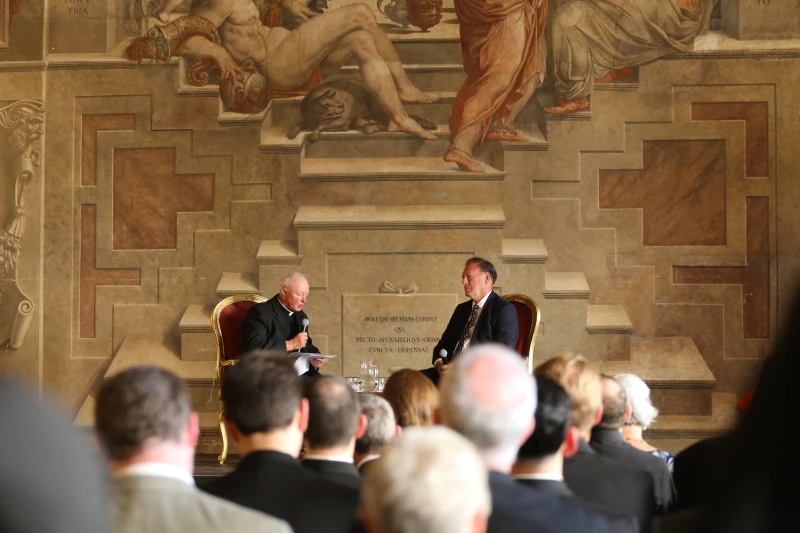

Judge Samuel A. Alito Jr., shares his perspective on how a legal system can provide for mercy during a conversation with Msgr. Laurence Spiteri (left) at the Vatican's judicial headquarters on Sept. 20, 2025. / Credit: Hannah Brockhaus/CNA.
Vatican City, Sep 21, 2025 / 14:24 pm (CNA).
United States Supreme Court Justice Samuel A. Alito Jr., spoke about the role that mercy can play in the legal system during an event at the Vatican on Saturday.
The Sept. 20 discussion at the Vatican’s judicial headquarters was organized by the U.S. Embassy to the Holy See, the U.S. bishops’ conference, and the Vatican’s Dicastery for Evangelization. The event was part of the Jubilee of Justice, part of the Church’s yearlong Jubilee of Hope.
Earlier in the day, Alito, a Catholic, greeted Pope Leo XIV following an audience for the Jubilee of Workers of Justice in St. Peter’s Square.
During a one-hour afternoon conversation with Msgr. Laurence Spiteri, an American priest and retired judge on the Vatican’s appeals court for marriage cases, Alito shared his perspective on how a legal system can provide for mercy.
“Justice is what everyone has a right to, it is what they are due … Mercy is something that we don’t necessarily merit,” Alito said. “The complete reconciliation of those two things, I think, is a mystery that we can only dimly, perhaps, perceive in this world.”
The 75-year-old Alito, who has served on the Supreme Court since 2006, said, “Mercy should be built into the laws … the authority to make the laws rests with Congress and Congress should build in mercy when it enacts laws.”
“The responsibility of the executive [branch], headed by the president, is to enforce the law,” he continued. “But the enforcement of the law often involves a measure of discretion and someone who has discretion to enforce the law should enforce the law with mercy. Judges have to follow the law. Sometimes the law is framed in a way that allows the judge to exercise mercy,” for example, in criminal sentencing.
“A legal system, of course, is supposed to promote justice, and in human terms, completely reconciling mercy with justice is probably impossible. I think probably only God can do that,” he said.
The audience at Alito’s talk included Vatican officials, including Cardinal Raymond Burke, former prefect of the Supreme Tribunal of the Apostolic Signatura and Bishop Juan Ignacio Arrieta, secretary of the Vatican’s Dicastery for Legislative Texts.
Catholic lawyers on pilgrimage to Rome for the Jubilee of Justice were also in attendance for the discussion, held in a chamber of the Cancelleria, a 16th-century building in the center of Rome that is home to the Holy See’s three tribunals: The Apostolic Penitentiary, the Apostolic Signatura, and the Roman Rota.
Read MoreOn Sept. 21, 1974, the Mariner 10 spacecraft made its second flyby of Mercury, passing by the surface at a distance of just under 30,000 miles (48,000 kilometers). Launched Nov. 3, 1973, Mariner 10 was the first spacecraft sent to Mercury, as well as the first mission designed to visit two planets. (It also visitedContinue reading “Sept. 21, 1974: Mariner 10 flies by Mercury”
The post Sept. 21, 1974: Mariner 10 flies by Mercury appeared first on Astronomy Magazine.
Read More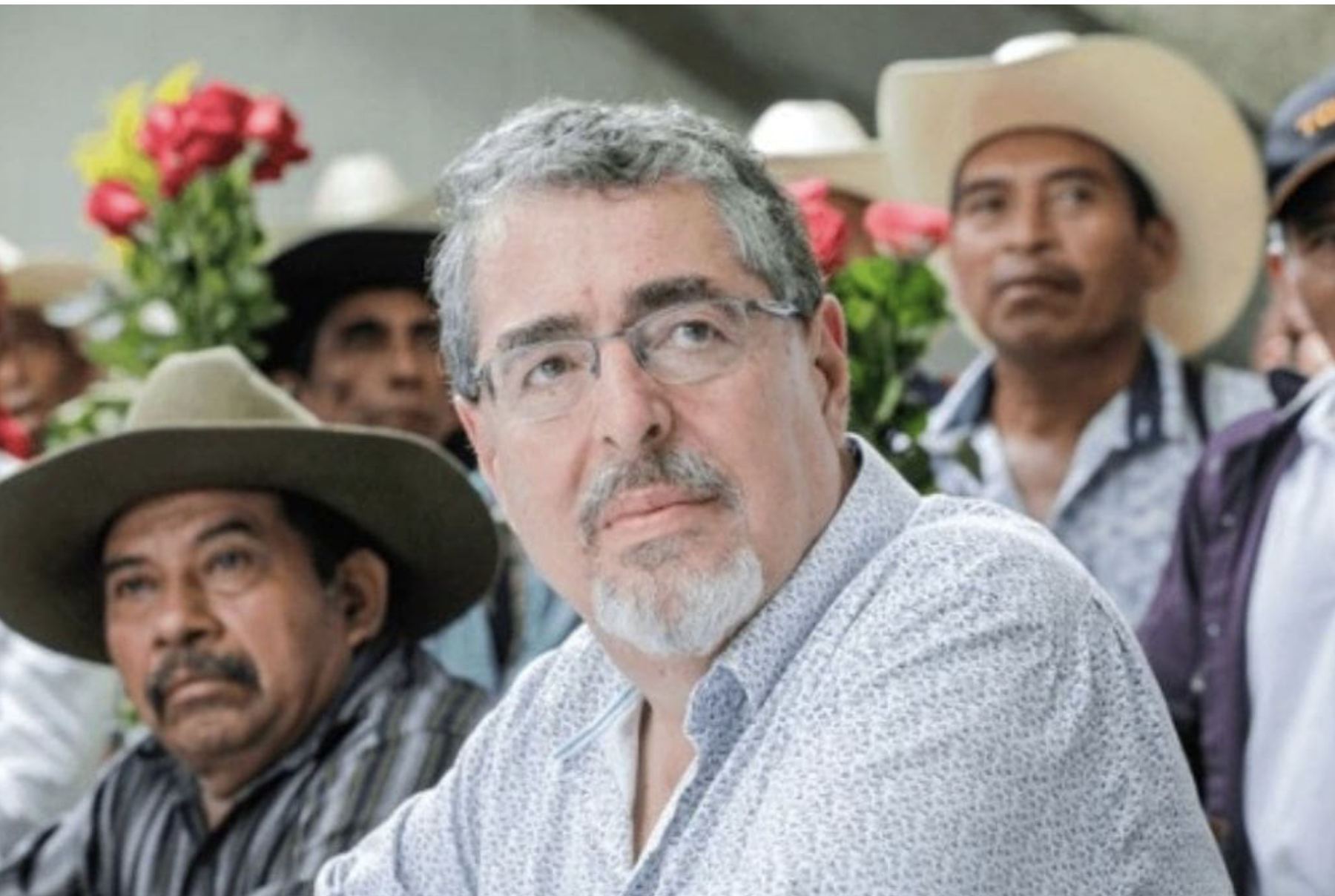


This is a Gateway Hispanic article.
The post The State Department is raising a Chavista ally in Guatemala appeared first on The Gateway Pundit.
Read More


This story originally was published by Real Clear Wire By Susan Crabtree Amid a fiery national debate over political violence and free speech, the Secret Service faces one of its biggest tests yet in securing Charlie Kirk’s massive funeral in Arizona this weekend.
The post Kirk’s Funeral Tests Secret Service Yet Again appeared first on The Gateway Pundit.
Read More
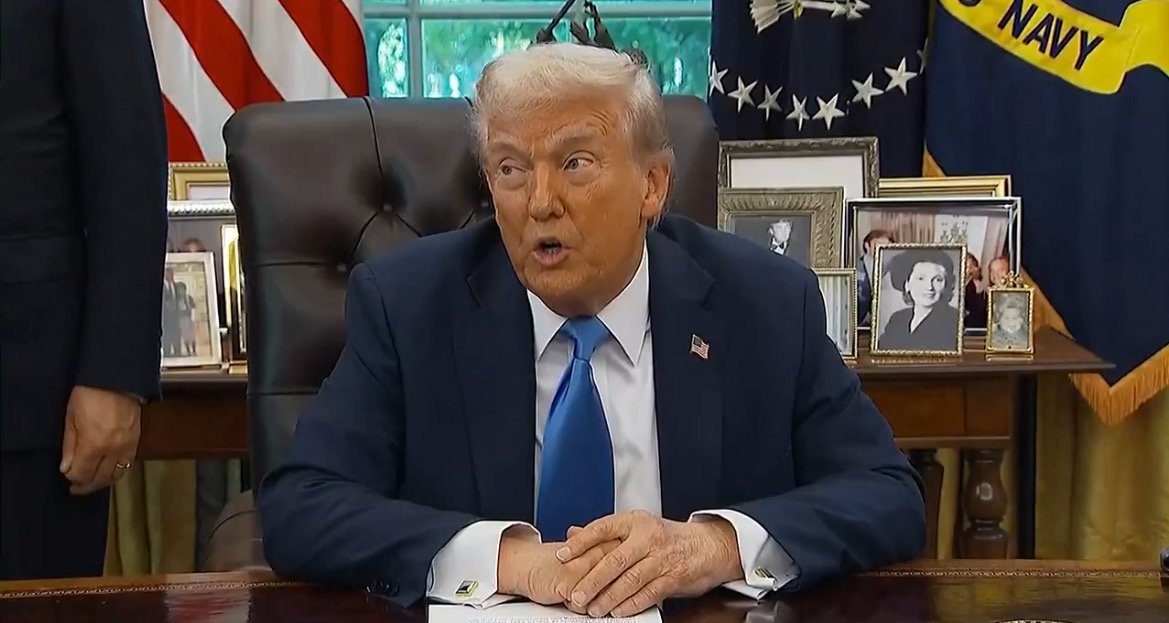


This is a Gateway Hispanic article.
The post The Trump Administration Announces Major Changes to U.S. Citizenship Test appeared first on The Gateway Pundit.
Read More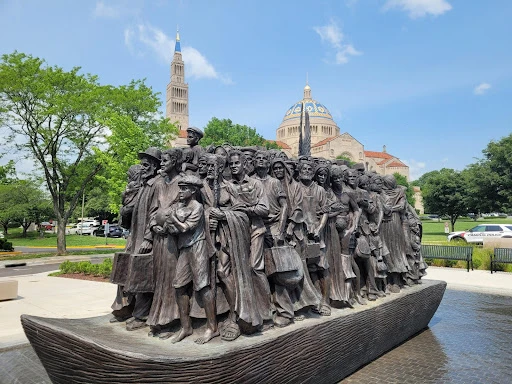

The “Angels Unawares” sculpture depicting immigrants to America on The Catholic University of America’s campus in Washington, D.C. / Credit: Peter Pinedo/CNA
ACI Prensa Staff, Sep 21, 2025 / 07:00 am (CNA).
The Catholic Church in the United States is preparing to observe National Migration Week 2025, calling for “growing in appreciation of the challenges faced by migrants and refugees” and reiterating a call “for a more humane system of immigration.”
National Migration Week will take place Sept. 22–28. The event, in its 45th year, has served as a time for the Catholic Church in the U.S. to reflect “on its history as an immigrant Church and the ways in which the country has been enriched by generations of immigrants, including the many Catholics who have adopted this land as their own,” the bishops said in a Sept. 18 statement.
“It is also an opportunity to grow in appreciation of the challenges faced by migrants and refugees, both in the United States and beyond, and to express solidarity through prayer, accompaniment, and advocacy,” they added.
The United States Conference of Catholic Bishops (USCCB) recalled that Pope Francis chose the theme “Migrants, Missionaries of Hope” for the 2025 World Day of Migrants and Refugees, an event to be held Oct. 4–5 to commemorate the Jubilee of Migrants rather than on the usual last Sunday in September.
This theme, the bishops said, recognizes “the courage and resilience of migrants and refugees who bear daily witness to hope despite hardship.”
This year, National Migration Week takes place amid the Trump administration’s aggressive deportation operations against unauthorized immigrants, which have created controversy in various sectors of society.
The USCCB noted: “The U.S. bishops have consistently expressed solidarity with immigrants amid the fear and anxiety prompted by current immigration enforcement efforts.”
“The bishops have called for, and continue to press for, ‘a more humane system of immigration, one that protects our communities while safeguarding the dignity of all.’ This includes encouraging bipartisan collaboration among policymakers,” the statement noted.
The American prelates also pointed out that in his message for the 2025 World Day of Migrants and Refugees, “Pope Leo XIV has continued to emphasize the dignity of migrants.”
“In a world darkened by war and injustice, even when all seems lost, migrants and refugees stand as messengers of hope. Their courage and tenacity bear heroic testimony to a faith that sees beyond what our eyes can see and gives them the strength to defy death on the various contemporary migration routes,” reads the passage from the pope’s message, quoted by the USCCB.
Therefore, the bishops of the United States asked the faithful to use National Migration Week as a time “to reflect on how hope can shape and inform our collective response to migration.”
In this regard, they encouraged dioceses, parishes, schools, and Catholic organizations throughout the country to observe the week “with prayer services, educational programs, community outreach, and support for migration-related ministries.”
The bishops are inviting Catholics to visit the conference’s Justice for Immigrants website, which “offers a comprehensive 2025 National Migration Week toolkit, including resources to help communities prepare spiritually and pastorally.”
This story was first published by ACI Prensa, CNA’s Spanish-language news partner. It has been translated and adapted by CNA.
Read More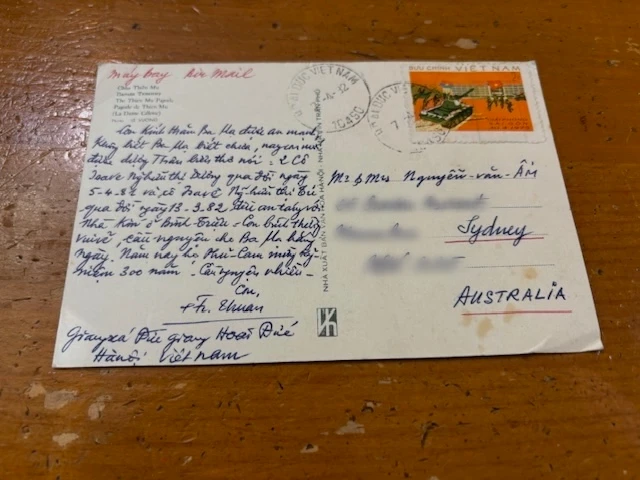

Then-Archbishop Van Thuan meets St. Teresa of Calcutta during her first visit to Vietnam as mother superior of the Missionaries in Charity in 1991. / Credit: Photo courtesy of Elisabeth Nguyen
Vatican City, Sep 21, 2025 / 06:00 am (CNA).
The beatification cause of Venerable Francis-Xavier Nguyen Van Thuan is receiving renewed attention from the Vatican 50 years after he was first imprisoned by the communist government of Vietnam, according to the cardinal’s sister.
Elisabeth Nguyen Thi Thu Hong, Van Thuan’s youngest sister and last living sibling, told CNA that the Dicastery for the Causes of Saints is encouraging Catholics to revive their efforts toward the cause as it launches a new webpage devoted to the Vietnamese cardinal, whose meditations on hope and forgiveness have inspired Catholics for decades.
The next stage in the canonization process “is up to the faithful … to pray to God through the intercession of the cardinal to get an approved miracle,” Nguyen said during a visit to Rome this week.

An official at the dicastery for saints confirmed to CNA the department is working on Van Thuan’s cause and reiterated the importance of a verified miracle for the process to proceed.
Van Thuan — declared venerable, the step before beatification, in 2017 — was a prisoner of the communist government of Vietnam for 13 years, spending nine of those in solitary confinement. His spiritual messages, smuggled out during his imprisonment, were collected and published in the book “The Road of Hope: A Gospel from Prison.”
After he was freed, Van Thuan was forced to leave his home country, spending his final years in Rome where he served at the Vatican’s Pontifical Council for Justice and Peace. In 2001, Pope John Paul II made Van Thuan a cardinal.
Van Thuan was diagnosed with terminal stomach cancer soon after, but four months before his death on Sept. 16, 2002, he made a final visit to Australia to see his family for his mother’s 100th birthday.

Witness of hope in God
Nguyen, the youngest of Van Thuan’s nine siblings, has written about her brother’s witness in the book “Cardinal Nguyen Van Thuan: Man of Joy and Hope,” coauthored by Father Stefaan Lecleir and published by Ignatius Press in April.
After writing the book, Nguyen said she was glad to contribute to the glory of God through sharing her brother’s life: “Especially in these recent times in our society when there’s so much anger and not accepting to forgive … I decided to write with Father Lecleir about the fact that [Van Thuan’s] message is really to forgive and hope in God through God’s love.”
Nguyen attended a Mass at her brother’s tomb at the Basilica of Santa Maria della Scala in Rome on Sept. 16, the anniversary of his death. The Mass also marked 50 years since his arrest and his composition of the spiritual messages that became “The Road of Hope” — immortalized in a newly-discovered photo of the Vietnamese cardinal from 1975.

The photo, which shows Van Thuan writing at a table in 1975, was taken by a man who served at the house where the bishop was under house arrest in communist Vietnam. A friend of Nguyen found it hanging on a family’s kitchen wall in Vietnam.
‘A mini dad’
Nguyen, who was a baby when Van Thuan was ordained a priest, said for her he was “more than a brother; he was like a mini dad.”
She shared some of her memories of her older brother, including the influence his clandestine letters had on her life and faith journey.
“For a long time, I never wanted to write [about Van Thuan] because it’s going back to some darker times,” Nguyen said.
She described Van Thuan as a very attentive son and sibling who always made time to visit his family or to write during his long imprisonment and subsequent exile.
Following the Vietnam War and the North Vietnamese Army’s invasion of South Vietnam, Van Thuan’s parents and most of his siblings fled to Australia, Canada, and the U.S.
In a postcard he sent to his parents in Australia in 1982, Van Thuan wrote to inform them of the recent death of two of their relatives in Vietnam. He added: “I am in good health. I pray for you and mom each day. This year, our village, Phú Cam, celebrates 300 years of becoming a Catholic village. Let’s pray a lot for each other.”

As a young man, Van Thuan would help watch over his baby sister, Elisabeth. As she grew up, she cared for his pet guinea pigs and birds. Nguyen recalled the loving guidance her priest-brother gave during her school years.
‘Are you happy?’
Growing up during the Vietnam War made Nguyen cynical about the goodness of God, she said, and in her young adulthood, she “turned away from the Church because I said, ‘God is love, but look at all of this atrocity and death in the family, and the whole country is really in pieces.’”
But her older brother, more than two decades her senior, was instrumental in her return to belief in the Catholic faith, she explained — starting with when she was finishing her master’s degree in philosophy at Sydney University in Australia in 1974.
Her master’s thesis was on the existentialist philosophers, such as Jean-Paul Sartre and Albert Camus. Van Thuan read the thesis to give her feedback, at her request. Because he was visiting Australia for a meeting with bishops, they had a chance to meet to discuss it.
“He said, ‘So you found the way for life now? Are you happy?’” Nguyen recalled. “And I burst out crying, because I said, ‘No, I’m not.’ I said, ‘I’m still searching, but what am I going to do now? I’m done with the thesis, I can’t go back now.’ He said, ‘No, professors accept freedom of thought. You can go and tell them, ‘I thought I really believed in this, but now that I’ve written it, did all the research, I’m not happy.’”
“He never condemned me or was judgmental,” she noted.
The following year, the Vatican named Van Thuan, already the bishop of Nha Trang for eight years, archbishop coadjutor of what was then known as Saigon. Shortly afterward, Saigon fell to the North Vietnamese Army and in August, Van Thuan was arrested by the communist government.
In 1979, he was transferred from a reeducation camp to house arrest, which is when he began to write messages on the back of page-a-day calendar leaves and sneak them out through a local boy, Nguyen told CNA.
Nguyen was captivated by the strength of faith she encountered in her brother’s letters. He “wrote a meditation on the logic of the cross, and that really, really [moved] me,” she said.
She was struck that he seemed to have met Jesus so deeply. “I need to find out what that’s like, to be able to meet God like him,” she thought. “That’s the one who changed my diapers, that’s the one who took me to the candy store.”
Read More:max_bytes(150000):strip_icc():format(jpeg)/TAL-lead-image-PROVIDENCECANYONSP0925-2999ac901c5843fbbf85b2565352db8c.jpg)